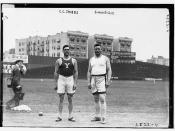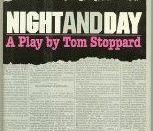Good morning crime fiction writers. Today I will be addressing you on how crime fiction focuses on solving mysteries and crimes, but that it also conveys numerous themes of the world and raises questions about the society depicted. A crime novel, film, play and any other texts must have a good storyline and contain a high-quality mystery to keep its audience intrigued, but all texts have their ideas and themes to put across. Many crime texts raise vital issues about people and the society and the issues raised must be taken notice of as the author's concepts frequently relate to life. Audiences pay attention to the plot and story of crime fiction texts but the themes and message that the writer or author is trying to bring across often goes unnoticed. I will present you with 3 texts which demonstrate that beneath the actual crime story or mystery, important themes are being conveyed by the writer in the depicted society.
The play "The Real Inspector Hound" by Tom Stoppard, the film "And Then There Were None" based on the novel by Agatha Christie, and Michael Connelly's novel "Bloodwork", all have intriguing and stimulating plot, story and dialogue, but one of the main purposes for these writers creating their text is to actually express their views, concepts and ideas.
Tom Stoppard's play "The Real Inspector Hound" is an example of Absurdist drama where the society is depicted by absurd plot and dialogue. In an irrational world, the conventions of cosy school style crime fiction are being satirised. The plot is overly emphasised to send up Agatha Christie novels, especially the novel Mousetrap. The idea of a play within a play is used to irrationalise the society depicted in the story. The crime is a murder committed in...


